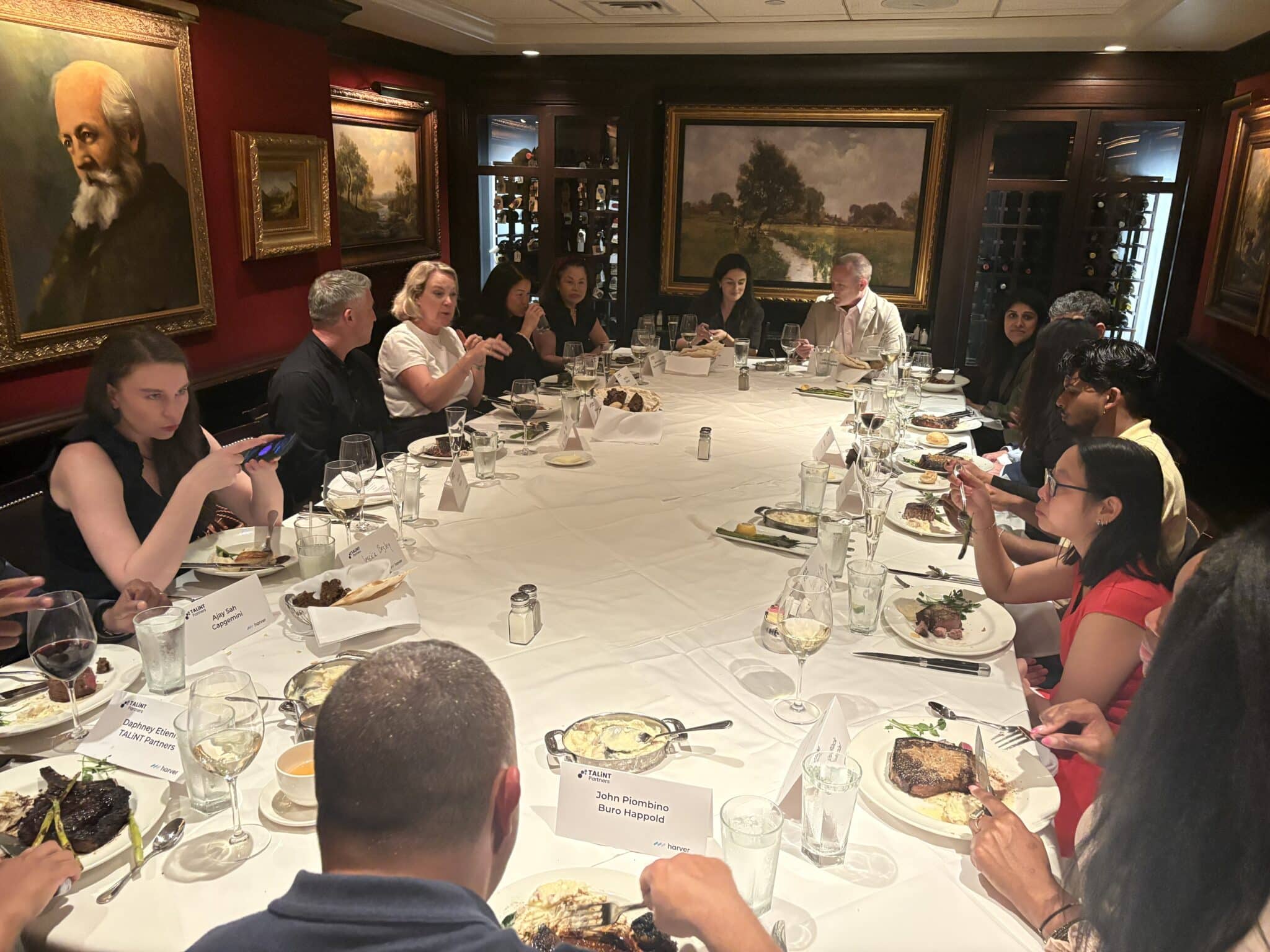As artificial intelligence (AI) continues to evolve, organisations are increasingly looking to harness its potential to drive efficiencies, improve decision-making, and enhance the employee experience. However, for many, the prospect of implementing AI at scale can be daunting, particularly in high-stakes areas like recruitment, internal mobility, and skills development. The complexity of AI adoption can introduce risks, especially when organisations rush to apply it in areas they aren’t fully prepared for. One of the most effective strategies to mitigate these risks is the phased approach to AI adoption.
A phased approach to AI adoption allows organisations to start small, test, and learn, while gradually building up the capabilities and understanding required for more complex applications. By beginning with low-stakes, high-impact areas, companies can de-risk the transition to AI and ensure that their workforce is prepared to fully leverage its capabilities over time. This measured approach not only ensures smoother transitions but also sets organisations up for sustained, long-term success with AI.
Step 1: Optimising job descriptions with AI
For many organisations, the first step in AI adoption should focus on relatively low-risk, high-reward applications. One of the easiest places to start is in optimising job descriptions. AI can be used to analyse existing job descriptions, identifying language patterns and biases that may affect the candidate pool. For example, gendered language or overly technical jargon can unintentionally alienate diverse candidates. By leveraging AI tools that help rewrite job descriptions in a more inclusive and accessible way, organisations can improve the diversity and quality of applicants they attract, without significant upfront investment or risk.
Using AI to enhance job descriptions also provides valuable insights into job requirements and helps align them more closely with the actual skills needed for the role, rather than outdated or overly broad criteria. This can contribute to better recruitment outcomes by ensuring candidates have the precise qualifications and skills needed for the job, reducing time-to-hire and improving overall candidate quality.
Step 2: Enhancing recruitment through AI-driven sourcing
Once organisations have gained confidence with simpler applications like job descriptions, they can advance to more complex AI applications in recruitment. One example is AI-driven sourcing, where machine learning models help organisations identify and engage with candidates who may not have otherwise been considered. By using AI to analyse resumes, online profiles, and even social media activity, organisations can uncover passive candidates and broaden their talent pool.
AI in sourcing can significantly improve recruitment speed and efficiency, allowing HR teams to spend less time manually sorting through resumes and more time engaging with top talent. Additionally, AI algorithms can learn from historical hiring data to identify the traits of successful candidates and optimise the sourcing process accordingly. By integrating AI at this stage, organisations can enhance their recruitment process, leading to better hiring decisions and more successful placements.
Step 3: Scaling AI for internal mobility and development
After testing AI in more basic recruitment functions, organisations can expand its use to more complex areas, such as internal mobility and skills mapping. AI has the potential to revolutionise how organisations approach internal talent development by enabling more strategic talent management decisions. AI-powered systems can track employee skills, experience, and career trajectories to suggest internal mobility opportunities that align with both individual aspirations and organisational needs.
For example, AI can analyse an employee’s current role, performance, and potential, and then recommend job openings or development programmes that could accelerate their career growth. This creates a more dynamic workforce and fosters a culture of career progression, while reducing reliance on external hiring. Importantly, this approach helps organisations maximise their existing talent pool, reducing turnover and improving employee engagement.
Skills mapping, facilitated by AI, also allows companies to identify skills gaps across the organisation, enabling more targeted development efforts. By using AI to analyse employee competencies and match them with the skills required for future roles or projects, organisations can create personalised learning and development programmes that foster growth and support business goals. This level of insight into workforce skills can also help HR teams make more informed decisions about talent allocation and succession planning, ensuring that organisations have the right capabilities in place to drive growth.
Step 4: Driving strategic decision-making with AI insights
As organisations continue to grow in their AI adoption, they can use the insights gathered through AI-driven systems to make more strategic decisions about their talent needs. Whether through forecasting future skills requirements or predicting employee turnover, AI has the potential to provide organisations with highly accurate, data-driven insights that inform workforce planning. These insights can help HR and business leaders anticipate future challenges and proactively address them, rather than reacting to issues as they arise.
AI can also support decision-making by identifying trends and correlations in large data sets that might otherwise go unnoticed. This ability to detect patterns in employee behaviour, engagement, and performance can be a powerful tool in improving retention strategies, optimising workforce productivity, and ensuring the organisation is equipped with the right skills to thrive in the future.
Step 5: Continuous evaluation and improvement
Throughout the entire process, organisations must ensure they are continuously evaluating and improving their AI systems. This includes not only measuring the impact of AI adoption but also refining the algorithms and models to ensure they remain accurate and aligned with business objectives. The AI landscape is rapidly evolving, and organisations must stay ahead of the curve by regularly reassessing their strategies and embracing new innovations as they become available.
A phased approach to AI adoption provides organisations with the flexibility to iterate and adjust their strategies based on real-time results. This enables them to gradually build trust in AI and gain valuable experience before diving into more complex applications, ensuring long-term success and maximising ROI.
Final thoughts
The phased approach to AI adoption offers a sustainable path to unlocking the potential of artificial intelligence in the workplace. By starting with low-risk applications, such as job description optimisation, and gradually advancing to more complex areas like internal mobility and skills mapping, organisations can mitigate the risks associated with AI adoption while realising tangible benefits. This incremental process allows companies to build the skills, capabilities, and confidence needed to fully leverage AI, empowering them to drive more strategic, data-informed decisions for talent management and workforce development.
As AI continues to evolve, the organisations that take a measured, thoughtful approach to its integration will be better positioned to capitalise on its transformative power, leading to a more agile, skilled, and future-ready workforce.
Find out more about AI-driven transformation in our SBO report!
The potential of AI in talent management is vast, and its impact is growing with each innovation. To fully unlock AI’s potential, organisations must take a thoughtful and phased approach, starting small and scaling as capabilities grow. For more insights on successfully navigating AI adoption, request a copy of our full report, The Definitive Guide to AI-Driven Talent Transformation. Gain valuable insights into practical strategies for AI adoption, showcasing success stories, and how to build an AI-powered workforce that is future-ready.
To find out more about how AI can transform your talent strategy, purchase the full report, The Definitive Guide to Becoming a Skills-Based Organisation.





